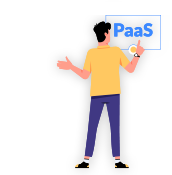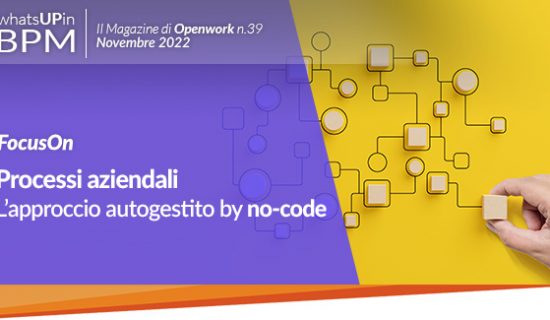Talking today about technologies that enable software development with low-code and no-code approaches, given the ever-increasing supply available, is starting to become scattershot.
If then the person approaching the subject is driven no longer by mere informational curiosity but, because of his or her role in the organization, by the need to make decisions and make a choice, then it becomes mandatory to understand how to navigate the varied landscape of offerings.
A guiding criterion can be to start with the question: what are the motivations why I find myself making a choice, what needs drive the search for and choice of a low-code/no-code approach?
In the enterprise environment, we were able to find that the main drives are related to issues such as:
- Skills Mismatch
- Time To Market
- Process Automation
- Rapid Prototyping
Skills Mismatch
We are now becoming more and more get used to hearing about Skills Mismatch, or the mismatch between the skills and abilities people possess and those required by the labor market, and this is even more evident when it comes to ICT and digitization. For example, programmers have become rare and valuable resources. This may be one of the very drivers that is driving your organization, which needs answers, to move toward low-code no-code development technologies, since they allow people with skills that are not necessarily technical or programming to participate in the software development process. This expands the pool of people who can contribute to the creation of applications, also creating a new profession that Gartner, several years ago, called Citizen Developer.
Time to Market
Time to market becomes an important criterion when the speed with which I get to the result is critical in the realization and evolution of digital services. By making predefined components, intuitive visual interfaces, reusability, easy integration and simplified development and lifecycle available to Citizen Developers, technologies of this type put a boost to the realization of enterprise applications.
Process Automation
Processautomation is the must today to maintain competitiveness, which necessarily involves working on Increasing Efficiency and Productivity, Reducing Errors and Improving Quality, and Optimizing Resources with Reducing Costs.
Topics that many people report but that, paradoxically, are still a thorn in the side not only of the SME but also of many large organizations. These, in fact, still have many core processes sustained by the goodwill and practices of people who feverishly move around stitching information together across multiple systems and operating with individual productivity tools (Word, Excel, e-mail in primis). This issue is certainly common to those working in public administration as well.
Rapid Prototyping
The low-code/no-code approach can be used extremely effectively for Rapid Prototyping of a software solution in the enterprise environment.
In fact, by enabling rapid creation and iteration of functional prototypes and fostering the involvement of stakeholders (including customers and end users) in the development process we ensure that the prototype actually meets the needs of users, helping organizations test and validate ideas efficiently, reducing costs and accelerating the development process.
The result of Rapid Prototyping can be brought into AS IS operation or be considered the starting point, i.e., a perfect representation of user requirements, to proceed with a development through other technologies.
The thrusts just detailed must then be cross-referenced with another aspect that looks at the application/functional area for which the choice is being made.
The classification produced by PwC in a recent talk given at the Jamio Community Day where the following areas were discussed:
- Orchestration Enterprise Applications
- UI Oriented Enterprise Applications
- Individual Productivity Tools
- Specific domains (Trouble Ticketing / CRM / Data Management / etc...)
For a clear classification of low-code and no-code technologies, it may be useful to consult the study carried out by PwC .
If, as it seems, the adoption of low-code and no-code development technologies has become an imperative for many organizations, it must always be remembered that any technological innovation is a valuable resource, but only when it is well directed and applied strategically.
Therefore, we are not only looking at increasing efficiency and reducing costs but also at the opportunity to help us turn our ideas into reality.
With a well-defined strategic focus and attention, we can take full advantage of the potential these platforms offer to improve the future of our organizations.
Jamio's contribution to Clinical Risk Management.
 Clinical risk represents a fundamental concept in the context of safety and quality in healthcare service delivery. It refers to the likelihood that a subject may be harmed, injuries, or errors during the diagnosis, treatment, or management of their medical conditions.
Clinical risk represents a fundamental concept in the context of safety and quality in healthcare service delivery. It refers to the likelihood that a subject may be harmed, injuries, or errors during the diagnosis, treatment, or management of their medical conditions.
The causes that can lead to risk are almost always the result of organizational, rather than isolated, issues, therefore, an integrated process involving the entire health care facility, from clinical staff to administration, should be put in place in order to ensure maximum patient safety and continuous improvement in the quality of care, this practice is identified as "risk management" or Risk Management.
More specifically, clinical health risk management refers to the set of activities and processes that are implemented to identify, assess and manage risks associated with health care; this includes analyzing potential risks, creating action plans to prevent or manage possible incidents, training staff, continually evaluating clinical practices to ensure patient safety, and promoting an open safety culture in which errors are addressed as learning opportunities rather than individual blame.
Thegoal of clinical health risk management is to minimize the possibility of errors and accidents, and to Improve quality, safety, and appropriateness of health care delivery with procedures to identify and prevent circumstances that could put a patient at risk of adverse events.
Clinical health risk management is supported by a number of national and international laws and requirements, regulations and guidelines aimed at promoting patient safety.
The following is a summary of the main ones:
1) OMS - Global patientsafety action plan 2021-2030
2) State-Regions Agreement March 2008
3) Ministerial Decree December 2009
4) Law 24/2017
But how can the risk manager and the health care company best achieve their goals?
The totality of clinical risk management activities can be greatly supported, facilitated and strengthened, by Clinical Risk Management information systems that orchestrate activities, processes and data.
The benefits of adopting such systems are summarized below:
- Fulfillment of regulatory obligations
- Continuous improvement in the quality, safety, and appropriateness of activities delivered
- Reduction On costs for possible lawsuits
- Savings on insurance rates
For example, NHS facilities must reportsentinel event and claims data to SIMES, and this activity is onerous, just as they must show to third parties that organizational procedures for governing adverse events have been put in place, or again, have negotiating elements to reduce the insurance premium . But even more, they must manage processes, putting in place as effectively as possible the activities of action definition, verification and improvement.
Application development platforms such as Jamio lend themselves to the implementation of Clinical Risk Management information systems, and in particular they give the possibility to cover the following functionalities:
- Management of Reports
- Input and validation
- Reporting of adverse drug and vaccine events (ADRs)
- Reporting care practice-related infections (ICAs)
- Report Trigger obstetrics and gynecology
- Event reporting on medical device
- Reporting event on organ donation
- Event Management
- Qualification and classification
- Root Cause Analysis (Root Cause Analisys)
- Audit Management
- Management Action Plan (corrective and preventive actions, indicators and measures)
- Prevention
- Management Annual Care Safety Plan (actions, indicators and measures)
- Quality management (ISO 9001:2015) of documented information and related records
- Archive of procedures, protocols, and guidelines
- Internal audit management
- Management audit accredited facilities
- Management of checklists, rating scales and questionnaires
- Model creation and versioning
- Definition of the distribution plan
- Distribution and collection
- Litigation and claims management
- Claims file management
- Management of the activities of the Claims Evaluation Committee
- Supporting the activities of the Office of Legal Affairs
- Quality document management
- Audits of accredited health care facilities
- Monitoring on risk management, litigation and claims
For more details https://www.crikhet.com/
The Jamio openwork training catalog

There is an increasing demand for professional figures who, with little technical experience in software development, can be active players in the creation of digital solutions. Such a figure takes the name of Citizen Developer.
Openwork, with the constant goal of contributing to the training of these figures and optimizing the learning curve of the Jamio openwork platform, has prepared new training paths described in a special training catalog.
This training proposal consists of as many as 12 modules that can be combined with each other in order to allow those involved to focus on the skills they actually need.
These are the main features of the routes proposed in the catalog:
Hybrid training
Modules can be delivered both in the classroom and online, via videoconferencing, in order to allow better interaction between faculty and participants;
Plurality of Figures Involved
The catalog is aimed not only at Citizen Developersor professional developers, but also at business figures so that they can learn to convey the value proposition of the no-code approach;
Constantly updating content
The Jamio openwork training catalog tends to be dynamic and constantly being updated, allowing participants to stay abreast of the latest trends, especially in innovative fields such as technology, where new topics and tools are constantly emerging;
Soft skills
The training catalog emphasizes not only the specific skills of the industry in which the participant works, but also soft skills such as more effective communication, critical thinking, versatility and resilience in work contexts.
ALDIA: Elisa Saragaglia's testimony
Transactional chatbot in order management. News from the Openwork / Bari Polytechnic University collaboration.

Another activity within the multi-year Openwork / Polytechnic of Bari collaboration has been successfully concluded: we make our congratulations to Filippo Troiani, already in Openwork's workforce, who completed his studies by earning a degree in Automation Computer Engineering with a thesis titled "Design and Implementation of a Transactional Chatbot as an Interface In Document Workflows."
"I had been given the task of integrating, into Jamio process management, a chatbot capable of interacting, in complete automation and simulating the presence of an operator, with different process stakeholders. I chose a business case of real application and topical interest, that of managing the many stakeholders involved in the management of a job order, for example, the subcontracting companies and their many employees."
This thesis deals with the integration of a transactional chatbot within document and business process management systems.
The feasibility study covered all major messaging services, analyzed their strengths, functions and adaptability to the defined use cases viz:
- send notices and communications to specific users or broadcast channels;
- ask open or closed questions and obtain answers and information;
- collect contributions including multimedia (photos, videos, documents, etc.).
A prototype was implemented to test the delivery of periodic, automated audit activities, for example, for verification of safety conditions or status checks.
The university-enterprise collaboration in which Openwork has always bet, continues to bear fruit: the prototype is currently being evaluated in Openwork's R&D area for possible future integration and development.
Stay tuned!








